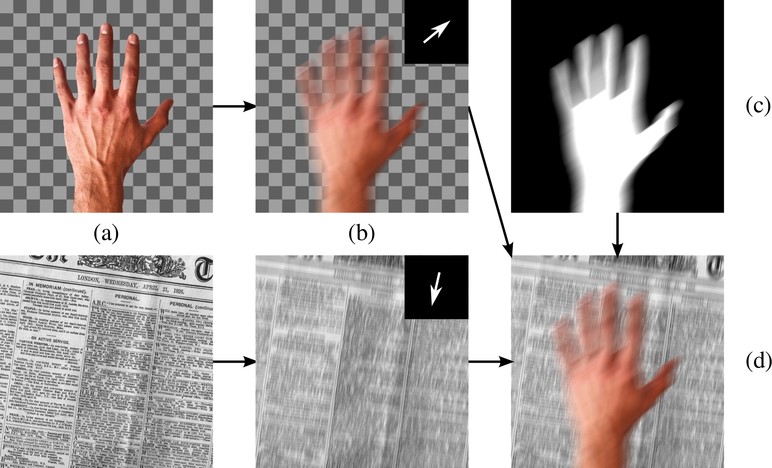Bioinspired and wearable robotics
A soft, fast and versatile electrohydraulic gripper with capacitive object size detection
A versatile jellyfish-like robotic platform for effective underwater propulsion and manipulation
Electrohydraulic musculoskeletal robotic leg for agile, adaptive, yet energy-efficient locomotion
A multifunctional soft robotic shape display with high-speed actuation, sensing, and control
Cutaneous Electrohydraulic (CUTE) Wearable Devices for Pleasant Broad-Bandwidth Haptic Cues
Motion Blur in Layers

Videos contain complex spatially-varying motion blur due to the combination of object motion, camera motion, and depth variation with finite shutter speeds. Existing methods to estimate optical flow, deblur the images, and segment the scene fail in such cases. In particular, boundaries between differently moving objects cause problems, because here the blurred images are a combination of the blurred appearances of multiple surfaces. We address this with a novel layered model of scenes in motion. From a motion-blurred video sequence, we jointly estimate the layer segmentation and each layer’s appearance and motion. Since the blur is a function of the layer motion and segmentation, it is completely determined by our generative model. Given a video, we formulate the optimization problem as minimizing the pixel error between the blurred frames and images synthesized from the model, and solve it using gradient descent. We demonstrate our approach on synthetic and real sequences.
Downloads
Data (synthetic and real video sequences and ground truth optical flow for the synthetic sequences)
Video
Members
Publications

